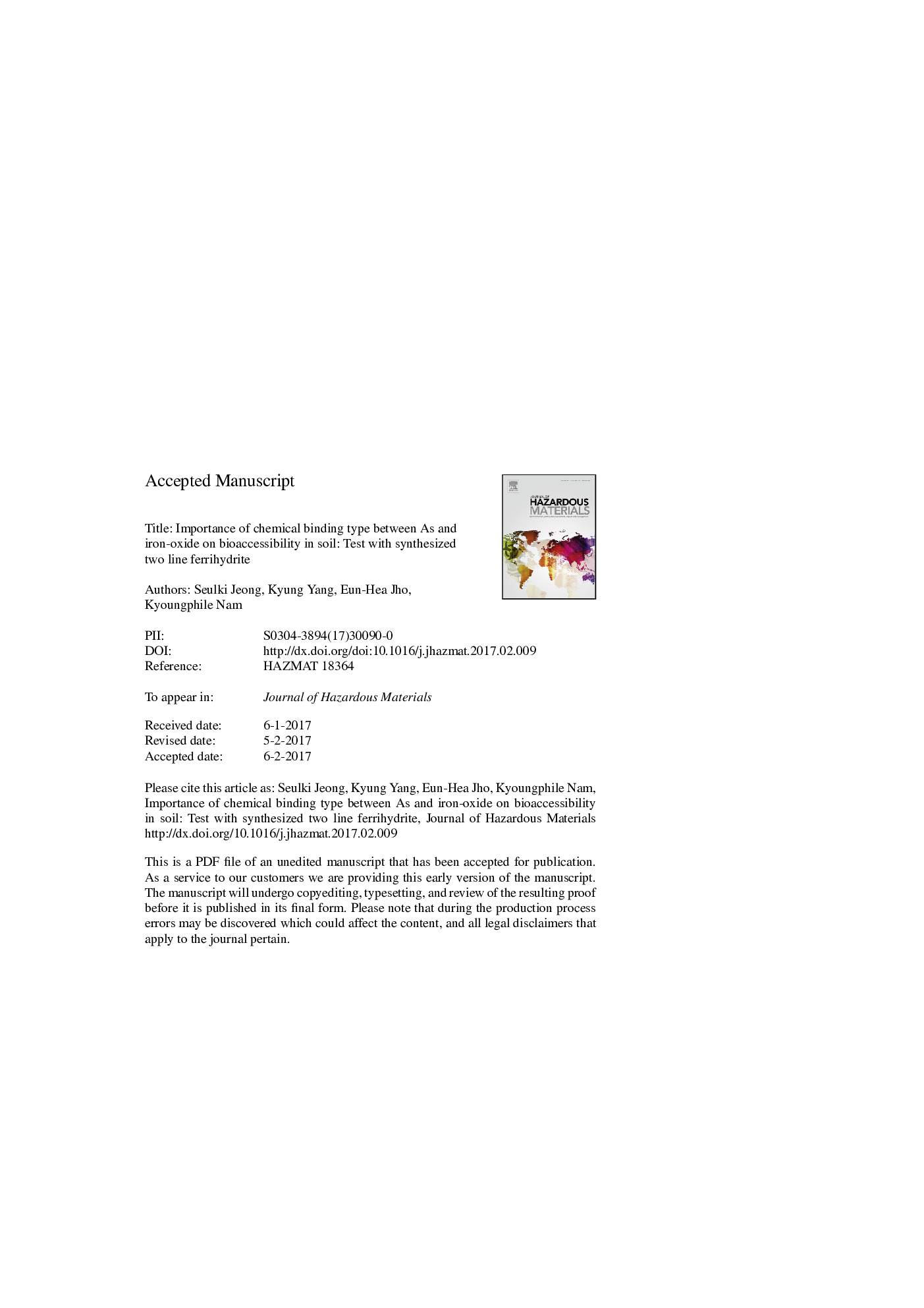| Article ID | Journal | Published Year | Pages | File Type |
|---|---|---|---|---|
| 4979512 | Journal of Hazardous Materials | 2017 | 26 Pages |
Abstract
Bioaccessible concentrations of As associated with Fe oxide as different chemical binding types were determined in soils using the in vitro Physiologically Based Extraction Test (PBET). When compared to the five-step sequential extraction data, most of the As extracted by in vitro PBET originated from the amorphous Fe oxide-bound fraction, and more importantly, the bioaccessibility of As ranged from 0 to 58.8% in 24 soil samples. Two batches of ferrihydrite were synthesized separately. For one batch, As was adsorbed onto the ferrihydrite after synthesis; for the other one, As was added while synthesizing ferrihydrite to co-precipitate. The bioaccessible concentration of As determined by in vitro PBET of the former was 415Â mg of As/kg of ferrihydrite and that of the latter was 67Â mg of As/kg of ferrihydrite. X-ray photoelectron spectra (XPS) analysis indicated that As-O-Fe bonds were evident in As-associated ferrihydrite sample and especially, As was found within the Fe oxide lattice in the co-precipitated sample. Our data suggest that binding type between As and Fe oxide should be considered when determining the bioaccessibility of As in soil, which, in turn, greatly influences the realistic risk of As present in soil.
Related Topics
Physical Sciences and Engineering
Chemical Engineering
Chemical Health and Safety
Authors
Seulki Jeong, Kyung Yang, Eun Hea Jho, Kyoungphile Nam,
